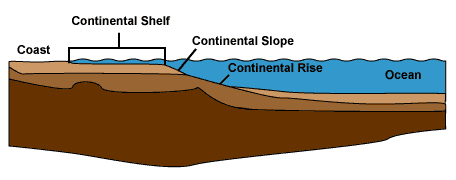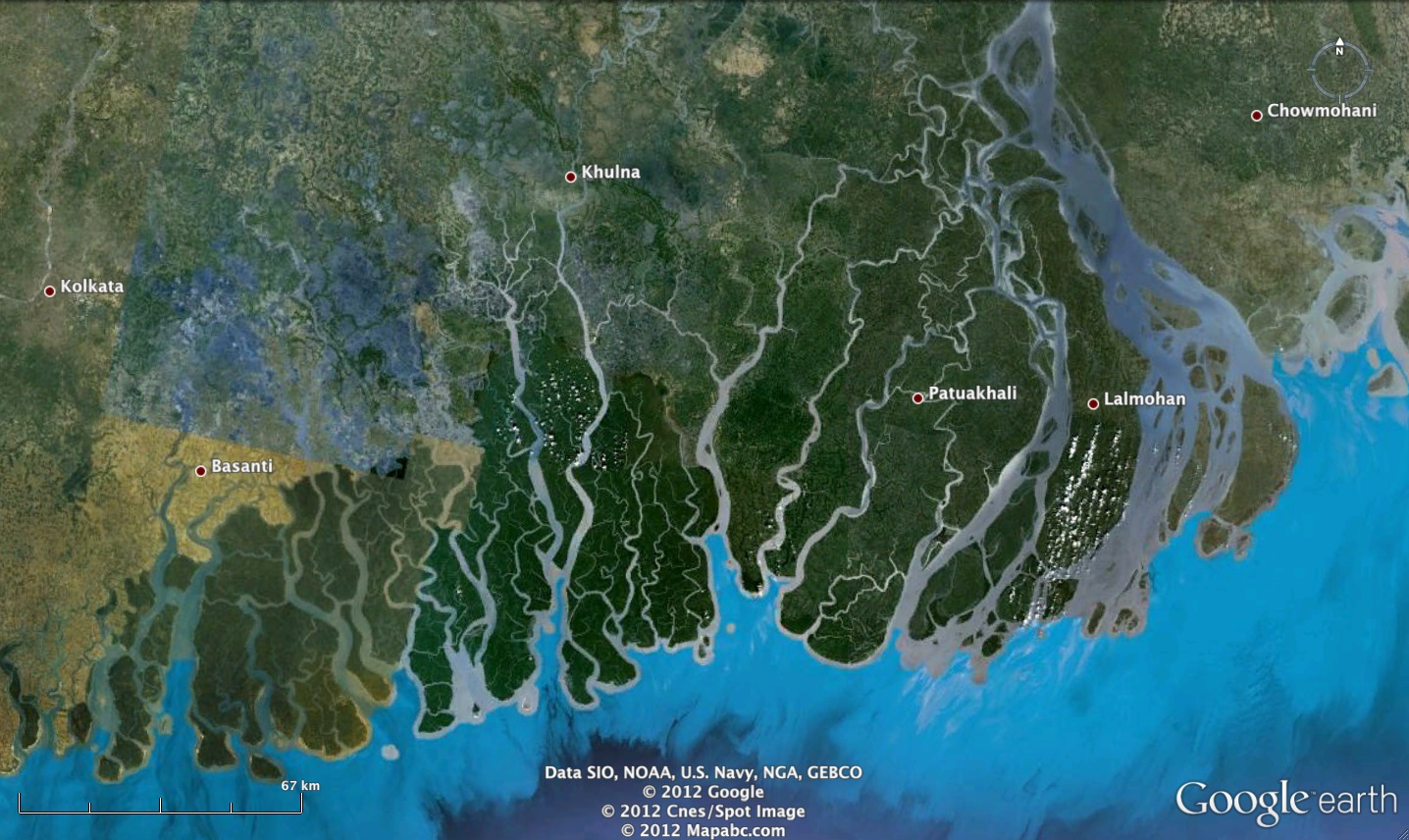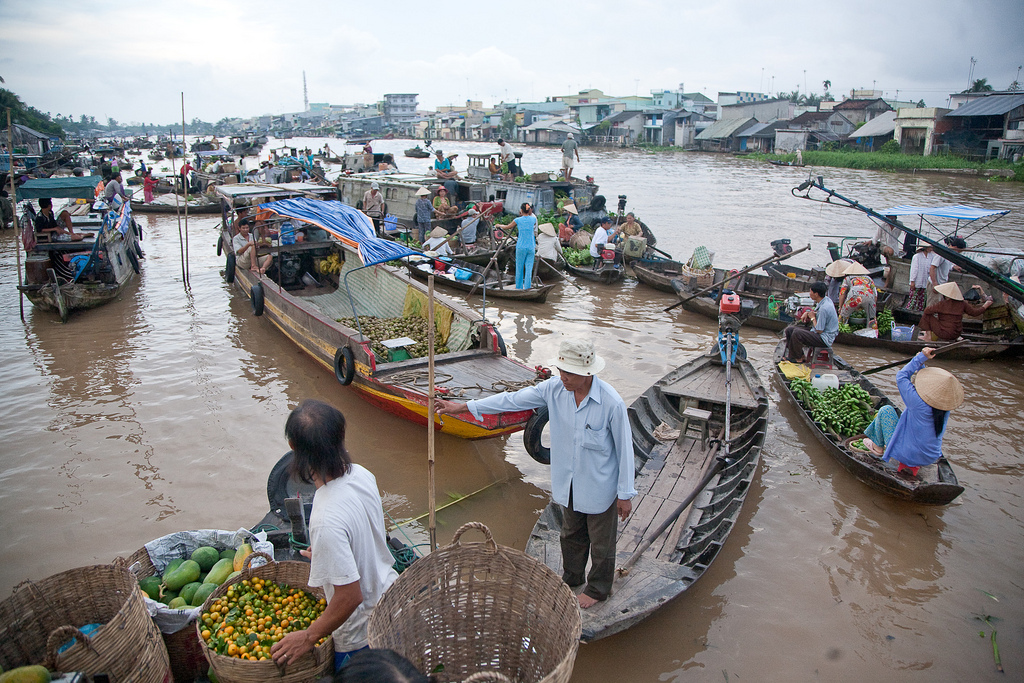Deltas and Human History
A few posts back, I flagged an 1856 map showing major mountains and rivers of the world arranged by size. One of the reasons I like that map is that it lays out dozens of river mouths side-by-side. As you scan the lineup, you’re reminded just how many major centers of human history have in fact been located in the watery landscapes of river mouths, whether delta or estuary.
But what exactly is the story behind human occupation of deltas? How far back does it go? And what precipitated it in the first place? Ann Vileisis’s Discovering the Unknown Landscape: A History of America’s Wetlands would suggest that extensive human occupation of deltas, estuaries, and other dynamic, watery places only happened through draining, filling, and otherwise drying these landscapes. Vileisis convincingly argues that, at least for Euro-Americans, “wetlands have long been a landscape on the periphery,” a landscape “long despised and avoided.”
But what about the rest of the world? Euro-Americans only settled in places like southern Louisiana in the last three hundred years. On other continents people have been living in and around wetlands for millennia, and often without attempting to so aggressively dry the landscape. What accounts for this opposing and rich history of human settlement in estuaries and deltaic plains (here’s a particularly striking example) around the globe?

Productivity and sea levels
One of the field of ecology’s most basic measures of an ecosystem is “productivity,” or the rate at which solar energy gets converted into living tissue (or biomass). Primary productivity refers to the rate at which plants convert solar energy directly into biomass. Secondary productivity refers to the rate at which organisms (mostly animals) convert other organisms into biomass. Which is to say, when animals (including humans) eat plants, fungi, and other animals to build tissues, they’re engaged in secondary productivity.
What does this have to do with river deltas? When sea levels began to stabilize about 7,000 years ago after a rapid rise at the end of the last ice age (about 18,000 years ago), they facilitated a huge burst of productivity along the coastal margins of the world’s landmasses. This happened largely because of the particular form continental edges take.
Rising sea levels pushed coastlines several kilometers inland, encroaching on continental shelves. Compared with the steep continental slopes where many coastlines had previously begun, continental shelves have much more gentle gradients. When sea levels stabilized at this higher elevation, they left these shelf areas inundated, creating much larger expanses of shallow water.

Shallow waters allow a great deal more light to reach the ocean floor. Since productivity depends ultimately on the conversion, by plants, of solar energy into biomass, it’s probably no surprise that shallow waters are a great deal more productive than deep ocean.
The productive river mouth
Because rivers deliver soil, nutrients, and organic matter to these areas while also stirring up nutrient-rich bottom waters. Deltas and estuaries, then, by virtue of being the meeting place of shallow ocean waters and nourishing rivers, are some of the most productive ecosystems in the world. Enriched by the combined pulses of seasonal flooding and marine tides, these landscapes rival tropical rainforests in their biological abundance. Indeed, a large portion of the world’s marine fisheries today depend fundamentally on the ecosystem services provided by deltas.
These dramatic increases in productivity along the world’s coasts, particularly wherever rivers encountered the ocean, produced a huge surge in the availability of large, nutrient-rich (think omega-3 fatty acids!) organisms. Without sounding too much like an environmental determinist (after all, human cultural practices and social institutions matter critically here), that abundance of high-quality food provided a set of conditions in which human communities could thrive.

Deltas and society
And indeed, in some places, they did. In one of my first posts, I described how stabilizing sea levels around 7,000 years also facilitated the formation of deltas and estuaries at river mouths. These new coastal landscapes were sites for some of the highest increases in productivity I’ve been describing. Within about 1000 years of sea levels stabilizing, early urban societies had begun to take hold in these new, highly productive environments all around the world. In the case of the Nile and Yangtze rivers, it only took about 500 years after sea levels stabilized for humans to expand settlement onto newly forming deltaic plains. River deltas globally became important sites for new developments in agriculture and hydraulic engineering, not to mention social organization and cultural exchange.
All that may seem like ancient history. But today deltas (to say nothing of estuaries) are still home to over half a billion people, including almost the entire population of Bangladesh. More than 200 million people live in the Ganges, Nile, and Mekong deltas alone. Meanwhile, several Asian megacities—Shanghai, Karachi, Kolkata (formerly Calcutta), Bangkok, and Ho Chi Minh City, to name just a few—are located on deltaic plains.

That half a billion, then, though a fraction of the globe’s population, isn’t insignificant. After all, the planet’s combined coastal zones—of which deltas are just a tiny portion—make up only 5% of the Earth’s land surface.
Which brings me to my main point. Deltas and estuaries aren’t just highly complex ecosystems. They’re also the epitome of porous places. Ann Vileisis may be right that at least Euro-Americans, having long despised wetlands, relegated them to the margins of cultural and social life. But I’d also say that story obscures the fundamentally human histories of these particular wetlands elsewhere in the world.

After all, complex societies emerged on (geographically) and alongside (temporally) these landscapes. Moreover, by being located at the intersections of vast watersheds and even vaster oceans, the communities that arose around deltas and estuaries became critical hubs for the exchange of goods, knowledge, and culture. Deltaic and estuarine wetlands may indeed be historically marginal places, but not in the sense of the word that conveys the insignificant or the peripheral. Rather, deltas are margins of encounter. They mark borderlands not only between diverse cultures, but also between earth and water, saline and fresh, nature and society. They are borderlands in which all of these things get muddled in highly productive exchanges (and I’m no longer speaking just ecologically).
Yes, today human-occupied deltas may be facing massive ecological challenges, from rising sea levels and subsiding landscapes, to aquatic dead zones. They have been marked, perhaps indelibly, by human institutions that have sought to stabilize and control what are fundamentally dynamic environments.
But these places also suggest long, deep histories of accommodation and negotiation, of give and take across fluid, porous boundaries between land and water, human and environment.
Further Reading
Biggs, David. Quagmire: Nation-Building and Nature in the Mekong Delta. Seattle: University of Washington Press, 2010.
Büdel, J. “Deltas: A Basis of Culture and Civilization.” In Scientific Problems of the Humid Tropical Zone Deltas and their Implications. Paris: UNESCO, 1966, 295-300.
Day, John, Joel Gunn, William Folan, Alejandro Yáñez-Aranciba, and Benjamin Horton. “Emergence of Complex Societies after Sea Level Stabilized.” Eos, Transactions, American Geophysical Union 88, 15 (2007): 169-170.
Kennett, Douglas J., and James P. Kennett. “Early State Formation in Southern Mesopotamia: Sea Levels, Shorelines, and Climate Change.” Journal of Coastal and Island Archeology 1, 1 (2006): 67-99.
Stanley, Daniel J., and Andrew G. Warne. “Holocene Sea-Level Change and Early Human Utilization of Deltas.” Geological Society of America Today 7, 12 (1997): 1-7.
Vileisis, Ann. Discovering the Unknown Landscape: A History of America’s Wetlands. Washington, DC: Island Press, 1997.
Vörösmarty, Charles J., James Syvitski, John Day, Alex de Sherbinn, Liviu Giosan, and Chris Paola. “Battling to Save the World’s Deltas.” Bulletin of the Atomic Scientists 65, 2 (2009): 31-43.
Woodroffe, Colin D., Robert J. Nicholls, Yoshiki Saito, Zhongyuan Chen, and Steven L. Goodbred. “Landscape Variability and the Response of Asian Megadeltas to Environmental Change.” In Global Change and Integrated Coastal Management: The Asia-Pacific Region. Edited by Nick Harvey. Dordrecht: Springer, 2006, 277-314.

2 Comments
Join the discussion and tell us your opinion.
[…] Post navigation ← Previous […]
[…] New York, the Netherlands, and elsewhere offer a great deal of hope for the future. People have inhabited watery places for thousands of years, but the last few centuries have seen humans increasingly eliminate water from their landscapes […]